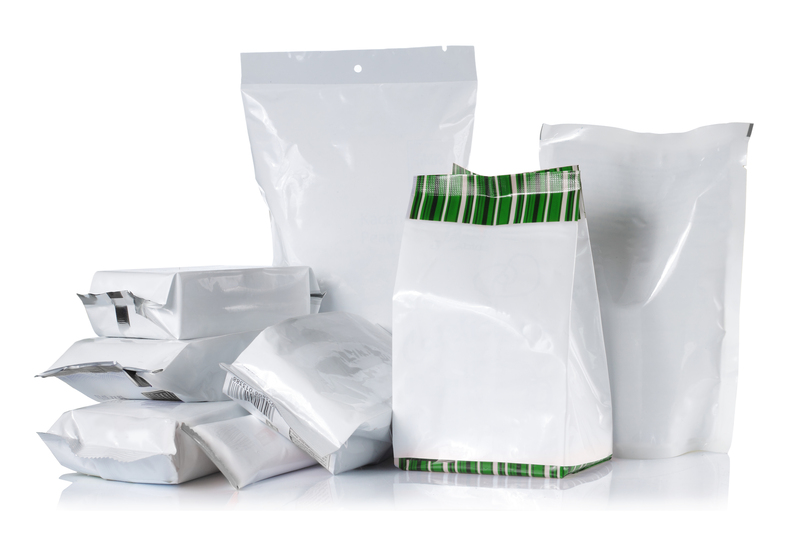Tips for Sorting and Recycling Cookware Responsibly
Are your pots and pans looking a little worse for wear? If you're about to replace your old kitchen cookware, you might be wondering: How do you dispose of cookware in an eco-friendly way? Sorting and recycling cookware responsibly is essential for reducing waste and environmental impact. This guide will show you simple, effective methods to recycle pans, separate materials, and make greener choices in your kitchen.
Why Proper Cookware Disposal Matters
Many people simply toss worn-out pots and pans into their regular trash without considering the long-term effects. Cookware often contains metals, coatings, and plastics that can pollute landfills and contribute to environmental degradation.
- Landfill Waste: Cookware takes years - sometimes centuries - to break down, increasing landfill volume and pollution risk.
- Resource Recovery: Recycling metals and plastics from cookware saves energy and raw materials.
- Pollution Prevention: Some cookware contains non-stick coatings or synthetic handles that can leach chemicals if not disposed of correctly.

Understanding Your Cookware Types
Before you start sorting, it's helpful to identify what type of cooking pots and pans you have. This determines the most environmentally sound way to dispose or recycle them.
Common Types of Cookware Materials
- Aluminum: Lightweight, rust-resistant, and commonly recyclable.
- Stainless Steel: Durable and highly recyclable metal.
- Cast Iron: Hefty cookware that lasts generations - recyclable but often reused or restored.
- Non-Stick (Teflon-Coated): Aluminum or steel cores with a plastic-based, non-stick surface; tricky to recycle.
- Copper: Beautiful metal, recyclable when separated from other materials.
- Enamel-Coated: Metal cookware with a glassy outer finish; recycling depends on local facilities.
- Ceramic/Glass: Non-metallic and often unsuitable for standard metal recycling programs.
Tip: If possible, check the manufacturer's label or website for disposal suggestions. Some brands offer recycling or take-back programs for their products.
Steps to Sort and Recycle Cookware
1. Assess Your Cookware's Condition
Just because cookware looks old doesn't mean it's ready for the recycling bin! Ask yourself:
- Is it still functional or could it be donated?
- Could it be cleaned or refurbished?
- Would a friend, family member, or charity benefit from it?
Reusing is the most responsible step before recycling or disposal.
2. Separate and Dismantle Cookware
Sorting cookware by material is key for effective recycling. Here's how:
- Remove Non-Metal Parts: Take off plastic, silicone, or wooden handles and knobs. These often aren't recyclable with metal and may need separate disposal.
- Disassemble Multi-Material Pieces: For cookware with glass lids or non-metal add-ons, keep components sorted by type.
- Check for Coatings: Scratched or flaking non-stick coatings are not ideal for recycling. If possible, peel off and discard (using local hazardous waste programs if needed), as metal recyclers prefer uncoated metals.
3. Find the Right Recycling Facility
Most local curbside recycling programs do not accept cookware due to its weight, size, or mixed materials. Instead:
- Contact Scrap Metal Yards: These facilities usually accept aluminum, cast iron, stainless steel, and copper cookware once stripped of non-metal components.
- Check with Household Waste Centers: Some municipal centers have days for "metal recycling" where you can drop off larger items.
- Specialty Recyclers: Metal recyclers may take only certain metals, so call ahead to confirm.
- Retail Take-Back Programs: Companies like TerraCycle, Sur La Table, or Williams Sonoma sometimes offer take-back, recycling, or mail-in programs for old cookware.
When in doubt, search your zip code on online resources like Earth911 or your city's waste management site.
4. Donate Usable Cookware
If your pans and pots are still in working condition, always favor reuse:
- Charity Shops: Goodwill, Salvation Army, ReStores, and church thrift shops often accept kitchen goods.
- Shelters and Soup Kitchens: Community centers, youth groups, schools, and shelters frequently need extras.
- Online Marketplaces: Use Freecycle, Facebook Marketplace, or Craigslist to give away items locally.
Donation helps keep cookware in use longer, decreasing demand for new products and the resources they require.
5. Compost Wooden or Bamboo Parts
If you've removed wooden handles or bamboo utensils from your cookware, check if your local compost program accepts untreated wood. Never compost lacquered, painted, or chemically treated wood.
6. Responsibly Dispose of Non-Recyclable Cookware
Some items, such as:
- Non-stick pans with Teflon (especially if damaged)
- Ceramic cookware with cracks or chips
- Glass or Pyrex that isn't heat-resistant
might not be recyclable. For these, use landfill only as a last resort. Some local hazardous waste programs accept Teflon-coated items due to the chemicals involved.
Sustainable Alternatives to Disposal
Repurpose Old Cookware
Get creative with upcycling! Instead of sending old pots and pans to the landfill, consider these uses:
- Planters for herbs or flowers in your garden
- Pots as quirky storage containers for tools or utensils
- Baking pans as trays for craft projects or organization
- Art projects - paint, decorate, or craft wind chimes or wall hangings
Repurposing is both fun and environmentally responsible.
Buy Recyclable and Durable Brands
The next time you invest in cookware, choose brands that highlight recyclability or offer take-back programs. Some options:
- Stainless steel or cast iron cookware - long-lasting and easily recycled after decades of use.
- Cookware with removable parts (handles, knobs) for straightforward sorting later.
- Brands with eco-certification or that use recycled materials themselves.
Making this choice upfront ensures easier, greener disposal in the future!
Common Mistakes to Avoid When Recycling Cookware
- Not separating materials: Mixed-material items can contaminate recycling loads.
- Dumping cookware in curbside recycling: Most curbside programs don't accept bulky metal items.
- Throwing away reusable items: Don't contribute to landfill if your cookware still works.
- Ignoring safety: Dispose of Teflon or damaged non-stick pans responsibly to avoid chemical hazards.
Expert Tips to Make Cookware Recycling Easier
- Contact local recycling centers before dropping off. Policies vary, and not all materials are accepted in every location.
- Document hazardous waste days in your municipality. These are often the only opportunities to safely dispose of Teflon or chemically treated cookware.
- Remove all food residue and wash thoroughly. Dirty cookware may not be accepted for recycling.
- Label separated parts (e.g., "aluminum body, wood handle") so recyclers know what to expect.

Frequently Asked Questions (FAQ)
Can I put old frying pans in my household recycling bin?
No. Most curbside recycling cannot process cookware due to its size, weight, or non-recyclable parts. Take pans to a scrap metal yard or a designated recycling center.
How do I tell if my pan is aluminum or stainless steel?
Aluminum pans are light and may not be magnetic, while stainless steel is heavier and will attract a magnet. Try the magnet test to help sort your cookware correctly.
What if my non-stick pan is peeling?
If the non-stick coating is damaged, the pan is not safe for cooking or most recycling programs. Check with your hazardous waste service or look for community collection days.
Is cast iron recyclable?
Absolutely. Cast iron can be brought to scrap metal recyclers. However, many people choose to restore or donate vintage cast iron due to its longevity.
What about glass lids?
Most cookware glass is toughened or treated and isn't the same as bottle glass. Check with your recycling center; otherwise, reuse or dispose with regular trash if there's no local option.
Conclusion: The Impact of Responsible Cookware Recycling
Sorting and recycling cookware responsibly isn't just about decluttering your kitchen -- it's about protecting our planet. By separating materials, choosing sustainable brands, and donating or recycling cookware through the correct channels, you can ensure less waste ends up in landfills and more resources are kept in circulation.
Responsible cookware disposal matters! With the tips above, you can make greener choices every time you clean out your cabinets. Remember to always check local recycling and donation guidelines to make the most eco-friendly decisions possible.
Take Action Today!
Start sorting and recycling your old pots and pans responsibly -- your kitchen, community, and the environment will thank you.
- Donate, recycle, or upcycle -- never simply toss your cookware away!
- Share these tips with friends and family to encourage a culture of sustainability.
- Choose durable, responsibly made cookware to make disposal and recycling easier in the future.
For more details on area-specific options, always check your local government website or waste management authority. With smart sorting and recycling, every kitchen can make a big difference!